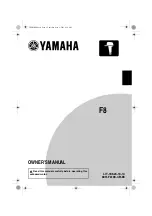
41
http://www.TYAN.com
Chapter 3: BIOS Setup
3.1. About the BIOS
The BIOS is the basic input/output system, the firmware on the motherboard that enables
your hardware to interface with your software. The BIOS determines what a computer can
do without accessing programs from a disk. The BIOS contains all the code required to
control the keyboard, display screen, disk drives, serial communications, and a number of
miscellaneous functions. This chapter describes the various BIOS settings that can be
used to configure your system.
The BIOS section of this manual is subject to change without notice and is provided for
reference purposes only. The settings and configurations of the BIOS are current at the
time of print and are subject to change, and therefore may not match exactly what is
displayed on screen.
This section describes the BIOS setup program. The setup program lets you modify basic
configuration settings. The settings are then stored in a dedicated, battery-backed memory
(called NVRAM) that retains the information even when the power is turned off.
To start the BIOS setup utility:
1. Turn on or reboot your system.
2. Press <Del> during POST (F4 on remote console) to start the BIOS setup utility.
3.1.1 Setup Basics
The table below shows how to navigate in the setup program using the keyboard.
Key
Function
Tab
Moves from one selection to the next
Left/Right Arrow Keys
Changes from one menu to the next
Up/Down Arrow Keys
Moves between selections
Enter
Opens highlighted section
PgUp/PgDn Keys
Changes settings.
3.1.2 Getting Help
Pressing [
F1
] will display a small help window that describes the appropriate
keys to use and the possible selections for the highlighted item. To exit the Help Window,
press [
ESC
] or the [
F1
] key again.
















































